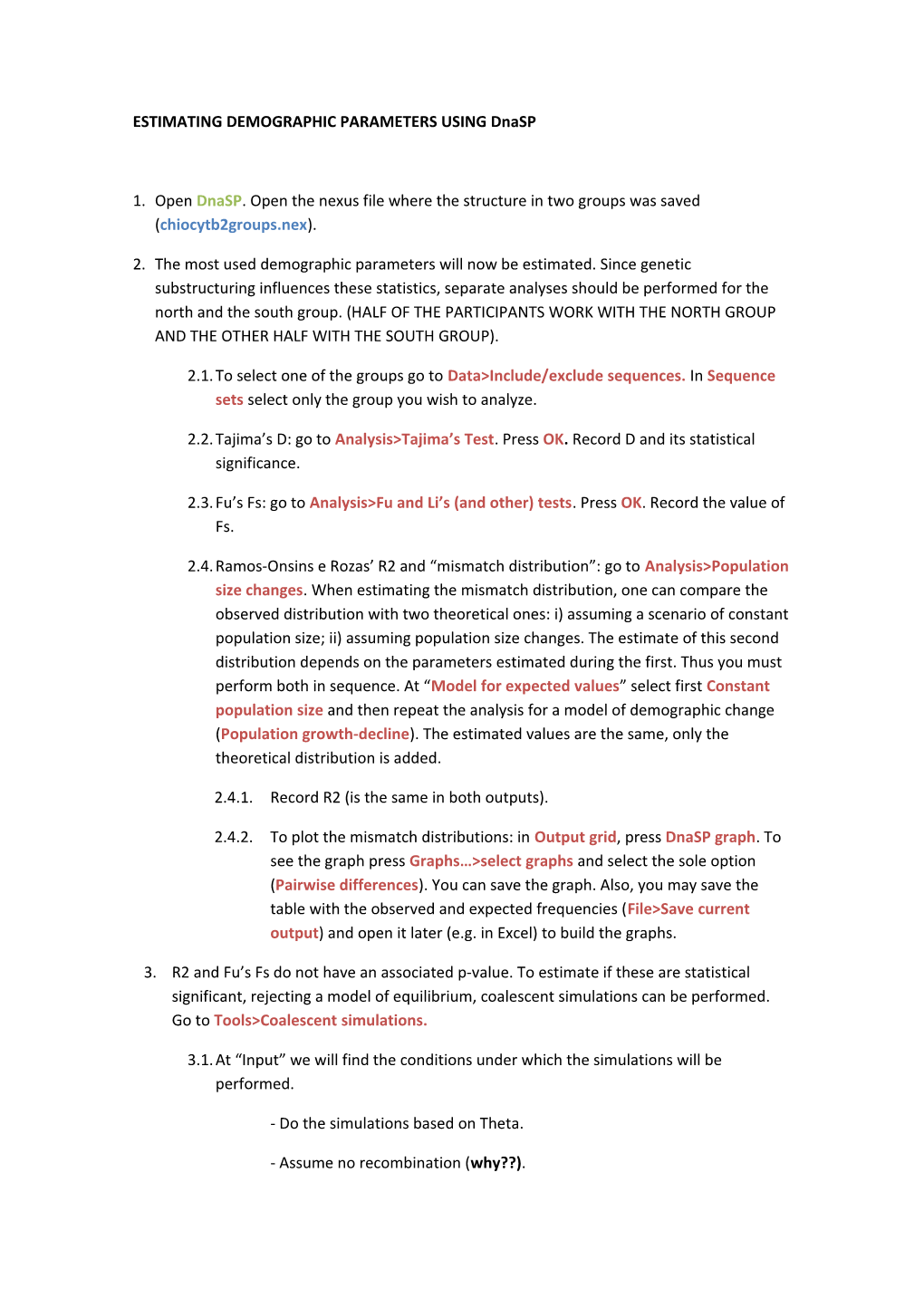ESTIMATING DEMOGRAPHIC PARAMETERS USING DnaSP
- OpenDnaSP. Open the nexus file where the structure in two groups was saved (chiocytb2groups.nex).
- The most used demographic parameters will now be estimated. Since genetic substructuring influences these statistics, separate analyses should be performed for the north and the south group. (HALF OF THE PARTICIPANTS WORK WITH THE NORTH GROUP AND THE OTHER HALF WITH THE SOUTH GROUP).
- To select one of the groups go to Data>Include/exclude sequences.In Sequence setsselect only the group you wish to analyze.
- Tajima’s D: go to Analysis>Tajima’s Test. PressOK.Record D and its statistical significance.
- Fu’s Fs: go toAnalysis>Fu and Li’s (and other) tests. PressOK. Record the value of Fs.
- Ramos-Onsins e Rozas’ R2 and “mismatch distribution”: go toAnalysis>Population size changes. When estimating the mismatch distribution, one can compare the observed distribution with two theoretical ones: i) assuming a scenario of constant population size; ii) assumingpopulation size changes. The estimate of this second distribution depends on the parameters estimated during the first. Thus you must perform both in sequence. At “Model for expected values” select firstConstant population size and thenrepeat the analysis for a model of demographic change (Population growth-decline).The estimated values are the same, only the theoretical distribution is added.
- Record R2 (is the same in both outputs).
- To plot the mismatch distributions: inOutput grid, press DnaSP graph. To see the graph pressGraphs…>select graphs andselect the sole option (Pairwise differences). You can save the graph. Also, you may save the table with the observed and expected frequencies (File>Save current output) and open it later (e.g. in Excel) to build the graphs.
- R2 andFu’s Fs do not have an associated p-value. To estimate if these are statistical significant, rejecting a model of equilibrium, coalescent simulations can be performed. Go toTools>Coalescent simulations.
- At “Input” we will find the conditions under which the simulations will be performed.
- Do the simulations based on Theta.
- Assume no recombination (why??).
- AtCompute, select one of the statistics to simulate (Fs or R2). On the right the estimated value is shown(note: only after estimating these parameters, the coalescent simulations can be performed).
- Keep the 95% confidence interval.
- Do 1000 simulations (usually not enough, though).
PressRun.
3.2.The “Output” tab shows the results of the coalescent simulations. Record the probability that a random value is lower than the observed one.
DISCUSSION
- What demographic pattern can be inferred for the two evolutionary groups of C. lusitanica?
- To perform the following analysis (with programFluctuate), two phylip files are needed: one containing the sequences from the north group and the second one with the south group.Since you have already selected one of the groups, export the data as a phylip file (only the group you’ve been working with will be saved). Call it north.phy or south.phyand save.
